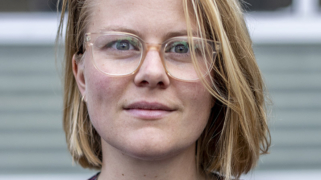Means and Ends
Kennislands visiting scholar Sarah Schulman buigt zich over de voor KL zeer relevante vraag: hoe weten we dat wat we doen ook echt waarde toevoegt? In het geval van Kennisland: maken we Nederland echt slimmer door wat we doen? Doen we genoeg goede dingen om het geld dat daaraan besteed wordt te rechtvaardigen? En wat is goed doen eigenlijk en wie bepaalt dat? Vragen, die op zijn tijd zeker gesteld moeten worden.
Klik hier voor links naar alle artikelen van haar hand op de KL-site.
On KLM flight #1127 to Copenhagen, I was given a choice: the sweet or savory snack. I opted for savory. A little while later, flight attendants announced we could text or tweet our feedback 24-hours a day, and receive a response within the hour. Here was a segmented service responsive to user feedback. It was oh so designed. So is this the kind of user-centered public services we want?
On Monday and Tuesday of this week, the Danish public sector innovation laboratory MindLab generously hosted the conversation: How Public Design? Thank you, MindLab.
About 100 folks from Europe, Australia, New Zealand, Singapore, Canada, and the USA convened to explore the role of design in policy and service delivery.
It was well organized. Well attended. Well catered. And well curated around two core questions:
- How might we work together to tackle some of the most pressing public challenges?
- What is the current edge of design-led approaches in government? Where do we go next?
It’s now Friday morning, and I’m left with a question behind the questions: Do we actually share the same conception of good public services? For which pressing social challenges? In other words, do we agree on the same ends? Or just on the same design-led means?
You see whilst I want a KLM kind-of-a service when it comes to trash collection or public transport, I want far more than a KLM-kind-of-a service when it comes to education or social care. For the latter, I don’t want to be treated simply as a user. And I don’t want a nice experience. I want a developmental experience. And since I don’t know what I don’t know, I want to be exposed to things I can’t even ask for. I want my values and preferences shaped. But, who gets to determine how my values and preferences are shaped? Who has the power to name what I learn, and for what purpose? Consultant designers? Elected politicians? Career public servants? Academic experts? Students? Parents? Individual teachers? Unions? Employers?
Answers to these questions require grappling with philosophy and politics. With adjudicating between the interests of individuals, groups of individuals, and the collective. Even our best design-led tools – be it ethnography, data visualization, segmentation, user journey maps – cannot resolve such values dilemmas.
Comfortingly, the words “values” “politics” and “ethics” surfaced during our two-days together. Chris Sigaloff noted that design and designers come with values. Eduardo Staszowski from Parson’s New School for Design lamented that politics is too often left out of the social design discourse. Charlie Leadbeater reminded us that design isn’t the solution.
But for all the recognition that design methods, toolkits, and workshops are insufficient, it was darn tough to get concrete and be contentious. What were the political viewpoints in the room? Who is on the political left? center? right? What are our ethical reference points? Is is good to nudge an individual to pay their taxes on time? To stop smoking? To socially connect? Is it good to embolden teachers and not students? Is it good to enable professionals to share information about families? And what are the unintended consequences of our work? For every older person we sign-up to our neighborhood schemes, who don’t we reach? Which inequalities do we (inadvertently) exacerbate? Which relationships do we (inadvertently) upset? How do we conceptualize and balance the good and the harm?
There seems to be an implicit assumption that any solution that emerges from a human-centered design process is good. And should eventually scale. We didn’t interrogate whether Family by Family, Circle, Patchwork, or any of the other talked-about innovations meet our different ethical and cultural criteria. Or whether these innovations should in fact be implemented in all contexts. For example, should innovative apps that assist professionals with information sharing be treated differently in countries with full civil/political liberties (e.g Netherlands), no civil/political liberties (e.g Chad) or partial civil/political liberties (e.g Singapore)? This is similar to the dilemma facing New York University Abu Dhabi. And detailed in the 9 September edition of the New Yorker. Can you take an innovation like liberal arts education and put it in a context that lacks political freedom?
Here’s where I worry. I worry that we’re missing the nuance and the reflexivity to acknowledge that no solution is good for all. And certainly not in every context. In any intervention, there will be winners and losers. So who exactly are the winners and losers each time? Perhaps the family that declines to engage in Family by Family only to find that the ‘system’ uses this as a strike against them? Perhaps the social worker that’s out of a job? Perhaps the political elites who can no longer use the same scare mongering to rally votes? How can we at least be aware of the bigger consequences? If not sometimes design for them, sometimes leverage them, or sometimes sideline them?
I’ll also admit to a second worry. That we’re one of the biggest winners. We are, after all, creating a new industry and a new kind of professional (the social designer). When we make 80 euros an hour, whilst the users we collaborate with make nothing (maybe a gift card?), are we further entrenching power relationships and inequalities? Voluntary peer-to-peer programs redistribute responsibilities, but how about resources? (See the Family Independence Initiative for a social program that addresses this head-on). How do each of us, as individuals, navigate our personal ethics? Are we ethically content with consultancy business models that disproportionally value technical expertise over lived experience? Are we OK with increasing numbers of social services provided by private companies (even if they are community interest corporations) who can cherry pick users and aren’t bound by the same governmental protections? Working free of governmental red tape enables us to innovate, but does it also unmoor us from other moral obligations? Or are we redefining these moral obligations too?
I do not know.
But I do know I want the conversation. A conversation that embraces conflict, not merely consensus. A conversation that’s rooted in live practice. A conversation that puts visible reference points to all the abstract words we use to describe our aims and our impacts: better lives, collaborative systems, inclusive societies.
And here’s where design methods might help. They can help us collect the raw material for us to then deliberate and debate. We use ethnography to develop new services and policy frameworks, but how often are we using ethnography to see the impacts of our interventions on individuals, networks, and systems? When we jump to surveys, self-reports, and even randomized control trials to track impact, we’re at risk of falling into the same traps. We’re limited by what we know to ask, and look for. And most of, we’re assuming that questions of impact are of a technical rather than an ethical nature. They are both. And this is where history should be a very important guide. The past is littered with examples of ‘innovations’ and ‘reforms’ in the name of ‘better’ lives and ‘better’ societies that have had devastating consequences. Like the removal of aboriginal children from their families.
Shall we try and find a way to open-up this black box? Or is it Pandora’s box?
Sarah Schulman




